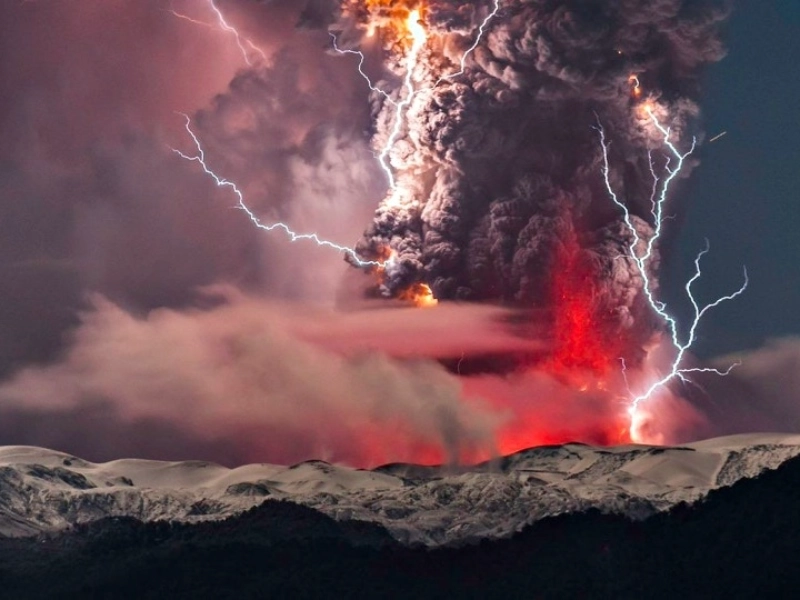Volcanic Lightning: Nature's Electrifying Spectacle
Advertisement
A stunning occurrence during volcanic eruptions, volcanic lightning combines the raw fury of nature's most damaging agents. The science underlying volcanic lightning, its several forms, and the amazing displays it generates is examined in this paper. Come along on an amazing dance of elemental forces as fire meets lightning in the exciting world of volcanic thunderstorms.
1. The Phenomenon of Volcanic Lightning

Advertisement
Combining two of nature's most potent forces—the explosive energy of volcanoes and the electric charge of lightning—volcanic lightning is an intriguing natural phenomena occurring during volcanic eruptions. Volcanoes erupt under settings ideal for producing electrical discharges, which produces a hypnotic show of light and sound among the tumult of an eruption. For millennia, this amazing phenomena has captivated researchers and onlookers, acting as a sobering reminder of the great force and complexity of the geological events occurring on our planet.
Unlike ordinary lightning, which strikes thunderstorms, volcanic lightning results from the particular circumstances produced by an erupting volcano. One of the most amazing displays in nature is the sight of lightning bolts dancing over ash clouds and lighting the night sky above a working volcano. From little sparks inside the ash plume to large bolts spanning the heavens, volcanic lightning can manifest itself in several ways. The nature and degree of the eruption will considerably affect the frequency and intensity of these electrical discharges. While some eruptions may just cause sporadic flashes, others create constant lightning storms spanning hours or even days.
This phenomena offers scientists researching volcanic activity important information in addition to being aesthetically beautiful. The existence and properties of volcanic lightning can provide information on the degree of an eruption, the composition of the ash plume, and the general volcanic activity. As such, it is now a really useful instrument in hazard evaluation and volcanology. To track and examine volcanic lightning occurrences worldwide, researchers employ cutting-edge technologies including satellite images and lightning detection networks.
Research of volcanic lightning also helps us to better grasp atmospheric electricity and the mechanisms of lightning generally. Through analysis of the particular circumstances causing electrical discharges in volcanic plumes, researchers might be able to provide ideas applicable to other forms of lightning generation. This cross-disciplinary approach emphasises the need of holistically analysing many natural events since it shows their interdependence.
You May Like
Advertisement









